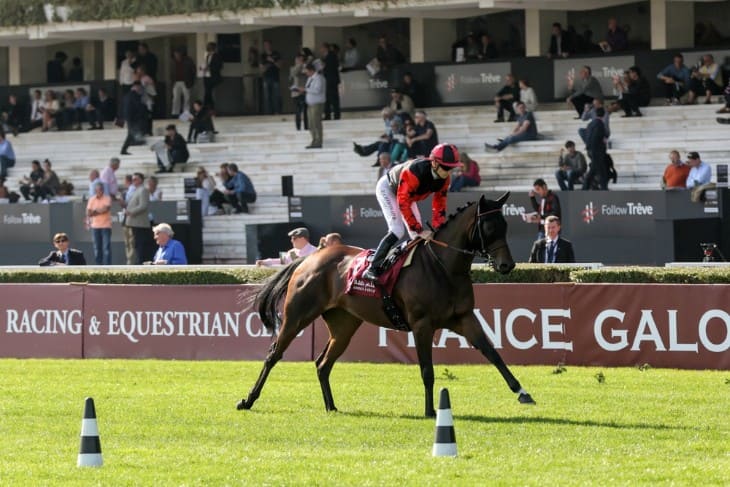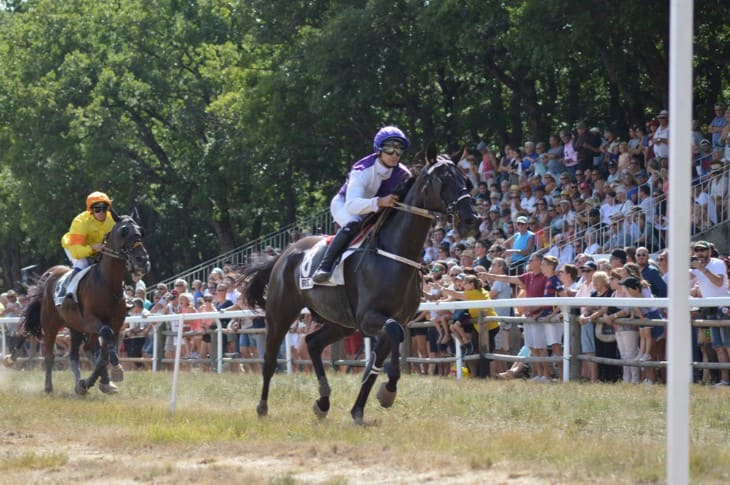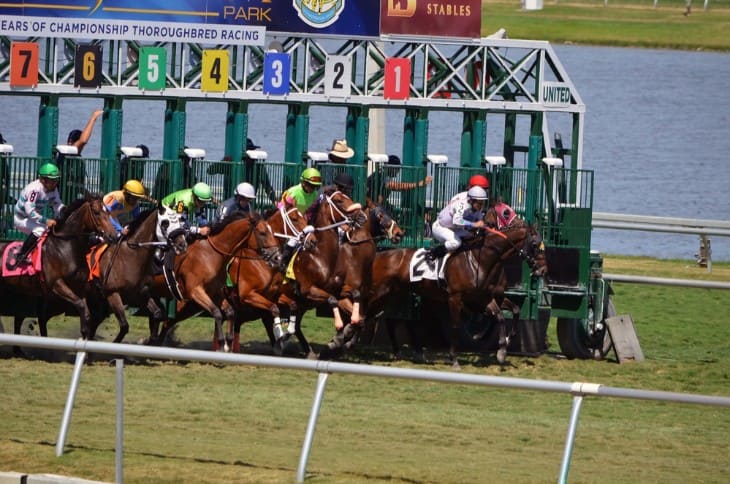- A Historical Perspective on Broadcasting the Grand National
- The Role of Television in Popularising the Grand National
- Digital Media and the Transformation of Coverage
- Challenges and Opportunities in Modern Media Coverage
- Exploring the Impact of Social Media on Grand National Engagement
- The Evolution of Commentary and Analysis in Grand National Broadcasts
- The Future of Media Coverage for the Grand National
- In Summary
Grand National is one of the few events in the sporting world that ignites imagination and excitement. This historical horse race held every year at Aintree Racecourse near Liverpool, England is not only a test of endurance and skill for horses and jockeys but also a significant cultural phenomenon.
This spectacle is incredibly shaped and shared by the media; therefore studying media coverage of the Grand National might be interesting. From radio transmission to digital streaming, this event's change in reaching its audience shows how consumer habits and changes in media landscapes.
A Historical Perspective on Broadcasting the Grand National
It has been a long journey since 1839 when the first Grand National was held. However, the media relationship with this historical event began much later than that. The first major milestone came in 1927 when the race was broadcast live on radio. Thereafter, people were following races from remote locations since that was no longer necessary for them to be physically present at Aintree Racecourse to watch it live. Suddenly everyone could join in the fun of watching the grand national from their living rooms.
Then everything changed when television came in 1960. Viewers could finally see the races on their screens at home. It marked an important point because now they could visually picture how exciting it would have been if they had watched it through those radios. Television made Grand National even more enjoyable due to its visual nature. It turned out that listening wasn't enough as anyone could see what happened during each jump or feel nervous before any serious decision-making.
Since then TV coverage has gone from strength to strength with slow-motion replays, close-ups and aerial views making the race more thrilling to watch. These improvements helped viewers make sense of what was happening in front of them while watching. On the screen, they could see exactly how skillful jockeys were and how brave those horses were. For many people, the Grand National was now a must-watch event besides being a race.
This transition from radio to TV represented a major historic change in Grand National's existence. In other words, the media is able to make any sport alive as happened with this horse race. Therefore, this famous event not only concerned people present at Aintree Racecourse but also addressed others through broadcasting. As a result of decades of media coverage the Grand National has gone beyond the boundaries of racetrack and become a much loved affair.
The Role of Television in Popularising the Grand National
Television took the grand national global. Here is what it did:
- Made everyone have access to the races: If you wanted to see a grand national before television came you had to be there physically at Aintree Racecourse. This changed with television sets around. Even if you didn’t attend the actual event it didn’t matter because you could view everything from your living room on TV. So no matter where families or friends gathered together, they all shared that experience of watching England’s prime racing competition.
- Added thrill by introducing new technologies: The race coverage improved with technology improvements in the TV industry. Slow motion replays enabled viewers catch thrilling jumps and near misses in detail. Aerial views gave an overall glimpse into course position thereby making the race even more spectacular. These technologies made watching races on TV so exciting.
- Grew the audience beyond horse racing fans: The Grand National on TV was not just designed for those who are diehard racing enthusiasts. The drama, tales of riders and horses, coupled with the sheer spectacle of the occasion drew people who would not have been attracted to watching horse racing usually. It is this appeal that expanded the race’s spectators.
- Turned the race into a national event: Through TV, it became an annual rite for many families in which they would gather around their television sets and place bets while cheering their loved contestants. For them, therefore, it was no longer just a sporting event but also served as a national ritual promoted through the medium of television.

Digital Media and the Transformation of Coverage
Grand National has been redefined by digital media by changing how we follow it mainly via online platforms (websites, social networking sites) has opened up new ways of following races like these. With today's internet technology and phones though fans can now be present at every moment irrespective of where they are situated during any particular time frame or day. This widespread modification made the Grand Race more accessible across cultural borders.
Online platforms and social media have become key players in race coverage. Fans can get instant updates and watch live streams so that they don't miss anything important happening. This is very important since it gives me reason to believe that today's fans understand what exactly is going on in as far as racing is concerned. This immediately available information means fans are closer to racing than ever before. A social media also allows fans to share thoughts about their experience with horse racing .This dialogue creates a community of racers lovers who together celebrate even if they are miles apart.
Behind-the-scenes content is another bonus of digital media hence enabling us to see what happens away from tracks when fans aren't looking that way you know? They can observe interviews with jockeys , trainers , and horses thereby making these horses look like real people instead of equipment or tools . This is the kind of content that goes beneath the surface level that adds meaning to this race illustrating what it takes to go beyond these tracks.
Streaming services have also played a part in transforming race coverage. They offer live broadcasts and replays, giving fans the freedom to watch the race at their convenience. This gets rid of rigidity for individuals who cannot be there physically while it is happening. It actually allows them not to miss out on interesting things.
Digital media has truly transformed how the Grand National is covered and experienced. It has made the race more accessible, interactive, and personal. Fans have more ways to connect with the race, making the Grand National an event that brings people together, no matter where they are in the world.
Challenges and Opportunities in Modern Media Coverage
Modern media coverage of the Grand National faces a unique set of challenges and opportunities:
- Competing for audience attention: In today's digital age, there's a constant battle for viewers' attention. With so many entertainment options available, broadcasters and digital platforms must work harder to captivate audiences. This challenge pushes them to innovate, making race coverage more engaging and interactive. By integrating social media, offering behind-the-scenes content, and using cutting-edge technology; they can create a viewing experience that rises above others.
- Balancing tradition with modernity: The Grand National is steeped in history, and maintaining its heritage while embracing modern media is a delicate balancing act. This challenge offers the opportunity to merge the best of both worlds. By honouring traditional elements during races as well as infusing it with contemporary technology as well as technics ,it shall cater for long term fans alongside new ones ,ensuring its attraction on evolving developments in media landscapes over time still remains relevant,enjoyable.v
- Better coverage through new technology: Digital media's rise has opened up opportunities for the use of novel technologies in improvised race broadcasting. A case in point is virtual reality, which could offer viewers a one-of-a-kind immersive experience that makes them feel as if they are at the Aintree Racecourse. Besides improving viewer involvement, this chance also improves new ways that are global to interact with the Grand National. Such technologies can change how we watch and enjoy the race.
- A survey of digital clutter: There is so much content available online that it can be difficult for Grand National coverage to break through. However, this saturation also presents an opportunity to think outside the box when showing the race. Differentiating content according to platforms, analysing audiences’ preferences using data, and creating interactive events can help filter through this noise.
Exploring the Impact of Social Media on Grand National Engagement
Social media has transformed how fans engage with the Grand National. It has opened up new ways for people to connect with their race, no matter where they are in the world. Platforms like Twitter, Facebook, and Instagram allow fans to follow live updates, share their thoughts, and engage with other fans. This makes the race a more interactive and communal experience.
One of the biggest impacts of social media is how it brings the excitement of the Grand National directly to fans. They can see photos and videos from the event, getting a closer look at the action. Fans also use social media to share their own experiences of the race. Whether they're at Aintree or watching from home, they can post about their favourite moments and discuss the race with others.
Social media also helps to build anticipation before the race. In the days and weeks leading up to the Grand National, posts and updates create a buzz. Fans can follow training sessions, get to know the horses and jockeys, and keep up with the latest news. This buildup enhances the overall experience of the race, keeping fans engaged and excited.
Another key aspect is how social media provides a platform for instant reaction and discussion. As the race unfolds, fans can comment in real-time, sharing their reactions and celebrating victories. This immediate feedback creates a lively and dynamic atmosphere around the race. It's like being part of a huge, global audience, all connected through social media.

The Evolution of Commentary and Analysis in Grand National Broadcasts
The way we hear and see the Grand National has changed a lot over the years, thanks to the evolution of commentary and analysis. Back in the day, radio commentary had to paint a vivid picture of the race with words alone. Commentators would describe every jump and turn, helping listeners imagine the thrilling action. When TV came into the picture, it brought the race to life visually, but the role of commentary didn't diminish; it evolved.
TV commentary has added depth to how we experience the Grand National. Commentators not only call the race as it happens but also provide analysis, background stories, and insights. This enriches the viewing experience, offering viewers a deeper understanding of the event. They learn about the horses, the jockeys, and what it takes to win or lose the race. This analysis helps fans appreciate the complexity and skill involved in horse racing.
The introduction of expert analysis has been a game-changer. Former jockeys, trainers, and seasoned experts join the commentary team to offer their perspectives. They share knowledge that only comes from experience, like strategies for tackling the course or what to look for in a winning horse. This expert input makes the broadcast more informative and engaging.
Technology has also played a part in evolving race commentary. Slow-motion replays, graphics, and data analysis offer viewers a more detailed look at key moments. Commentators use these tools to break down the race, explaining the significance of certain moves or why a particular horse performed as it did. This technology-enhanced commentary makes the complex sport of horse racing more accessible to viewers.
The Future of Media Coverage for the Grand National
The future of media coverage for the Grand National looks bright and full of exciting possibilities. As technology advances, viewers can expect even more immersive ways to experience the race. Innovations in virtual reality (VR) and augmented reality (AR) are set to change the game. Imagine putting on a VR headset and feeling like you're riding alongside the jockeys, jumping over fences, and sprinting towards the finish line. This could become a reality, making fans feel closer to the action than ever before.
Live streaming services will continue to play a significant role in how people watch the Grand National. These platforms will offer more flexibility, allowing viewers to watch the race from anywhere in the world on their smartphones, tablets, or laptops. This means that no one has to miss out on the excitement, no matter where they are.
Social media will also enhance the way the Grand National is covered. Platforms like Twitter, Instagram, and Facebook will provide real-time updates, behind-the-scenes content, and interactive discussions. Fans will be able to share their experiences and thoughts instantly, creating a global community of race enthusiasts.
Another promising area is the use of drones for aerial coverage. Drones can capture angles and perspectives that traditional cameras cannot, offering viewers a unique view of the racecourse and the surrounding scenery. This could add a new dimension to the coverage, making it even more engaging.
The future of media coverage for the Grand National is all about bringing fans closer to the action through technology. With VR and AR, live streaming, social media, and drones, the coverage will become more interactive, immersive, and accessible. As we move forward, these innovations will ensure that the Grand National remains one of the most beloved and watched sporting events in the world.
In Summary
The media coverage of the Grand National has come a long way from its humble beginnings on radio to the multifaceted digital landscape of today. Each phase of this evolution has contributed to the race's enduring popularity, bringing the excitement of Aintree to millions of viewers worldwide. As media technologies continue to evolve, the ways in which we experience and engage with events like the Grand National will undoubtedly change.
However, the core of what makes this race so captivating – the thrill of competition, the stories of triumph and heartbreak, and the sheer unpredictability of outcomes – will ensure that it remains a highlight of the sporting calendar, both on-screen and off. The race's rich heritage, combined with the dynamic nature of its media coverage, illustrates the complex interplay between tradition and innovation in the world of sports broadcasting.







